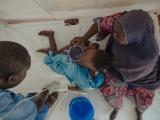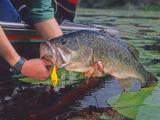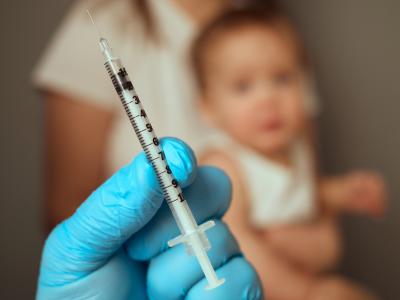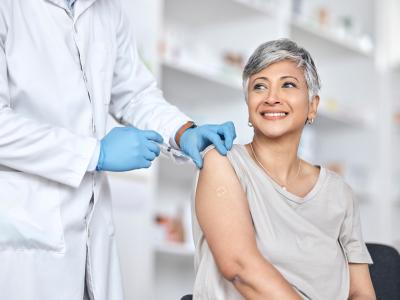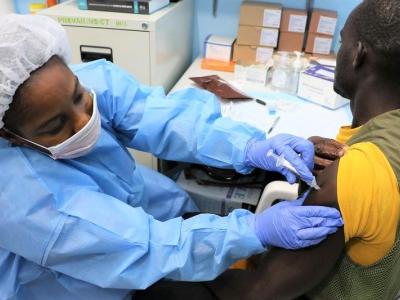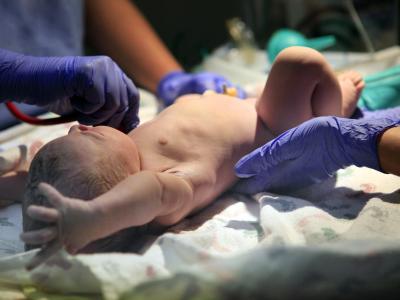Jun 7, 2011 (CIDRAP News) – German investigators working on a major enterohemorrhagic Escherichia coli (EHEC) outbreak revealed little new information today, as the number of infections continued to rise and new details emerged about four American cases linked to the outbreak and an atypical pattern some doctors are seeing in severely ill German patients.
The European Centre for Disease Prevention and Control (ECDC) said today that 1,755 EHEC cases have been reported from EU countries, along with 674 cases of hemolytic uremic syndrome (HUS), a potentially fatal kidney condition. So far the ECDC has received reports of 23 deaths. Compared with yesterday, the total reflects 83 more infections, 13 more HUS cases, and 1 more death.
It's unclear if the outbreak is tapering off, because reports don't specify if illness onset dates refer to diarrhea or HUS symptoms.
Yesterday officials in Lower Saxony state said results were still pending on 17 more samples from an organic sprout farm in northern Germany that authorities suspect might be the source of the outbreak strain, the extremely rare E coli O104:H4.
Hamburg's health minister, Cornelia Pruefer-Storcks, said tests on a package of wilted sprouts found in the home of one of the infected patients were negative for the strain, Deutsche Presse-Argentur (DPA) reported today.
In another new twist, a German neurologist said yesterday that about half of the patients with HUS have experienced symptoms such as cognitive difficulties, twitching, and convulsions, Science Insider, the online news service of Science magazine, reported yesterday. Dr Christian Gerloff, who heads the neurology department at University Medical Center Hamburg-Eppendorf, told the news outlet that clinicians became alarmed when several of the HUS patients had problems reading or performing simple calculations, then progressed to seizures.
Neurologists at a Hamburg clinic are screening HUS patients daily to assess the symptoms and prescribe anticonvulsants, if needed, according to the Science Insider report. Gerloff added that doctors expected some patients would have strokes, a neurologic condition that he said is more commonly linked to HUS. He said magnetic resonance imaging hasn't shown evidence of structural brain damage, but autopsy findings will shed more light on the source of the neurologic complications.
Meanwhile, the US Centers for Disease Control and Prevention (CDC) today released fresh details on four US cases that are suspected to be linked to the European outbreak. All had traveled recently to Hamburg, Germany, the focus of the outbreak. In a statement it said one case is confirmed and the three others are still suspected.
The confirmed case-patient has been diagnosed with HUS in Massachusetts, and his or her infection matches the German outbreak strain, the CDC said. Of the three suspected cases, two patients have HUS, one from Michigan and one from Wisconsin. The illness of the third suspected case, a patient with a Shiga toxin–positive diarrheal illness, is still under investigation.
The CDC said it is working with state health departments to learn more about the suspected cases and obtain bacterial samples to further characterize the E coli O104:H4 strain. It added that a small number of US military members in Germany with diarrheal illness are under investigation.
At a press conference today to release an annual report on US foodborne illness patterns, CDC director Tom Frieden, MD, said US public health officials have offered support to their German counterparts and have been conducting informal discussions and consultations with them. He said it can be extremely challenging to identify the contaminated food source, from an epidemiologic and laboratory perspective.
Chris Braden, MD, director of the CDC's Division of Foodborne, Waterborne, and Environmental Diseases, said US officials are sharing information they're learning about the US patients with German officials. For example, he said the European investigators would probably find it useful to know what meals the travelers consumed while in Germany.
In other outbreak developments, European agriculture ministers met in an emergency session today to discuss food safety issues and compensation to farmers who have been hurt by warnings about eating fresh produce. The European Commission proposed a $219 million payout to farmers affected by the crisis, but producers, especially those from Spain and France, demanded more, the Guardian, a newspaper based in London, reported today.
Spain, econonmically hurt when Germany officials early in the outbreak wrongly linked the pathogen to Spanish cucumbers, asked the European Union to compensate it for 90% to 100% of the market price, which EU agriculture commissioner Dacian Ciolos said was unrealistic, according to the report.
Ciolos told the agriculture ministers that he would return tomorrow with a better proposal, the Guardian reported.
See also:
Jun 7 ECDC outbreak update
Jun 7 DPA story
Jun 6 Science Insider story
Jun 7 CDC statement
Jun 7 Guardian story





